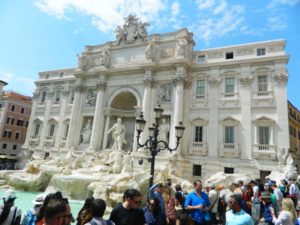By Geneva and Nick
Today we found ourselves visiting the Palazzo Massimo and the Baths of Diocletian Museum. We began our day by taking the 75 bus to the end of the line where there was a huge train station where you could catch trains to almost anywhere in Europe. About two blocks away was the Palazzo Massimo national museum. There we focussed on identifying and viewing the four types of Pompeian painting.
My (Geneva’s) favorite type was the second style. This style was notable for its architectural style and creation of 3D spaces. A piece that really spoke to me was the Villa Livia, Goldman warned us before entering the room “to be prepared” for what we were about to witness, and it didn’t disappoint.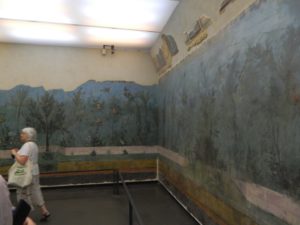
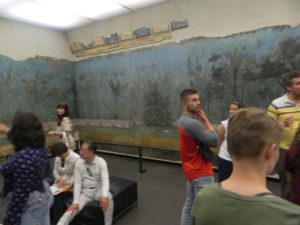
Unfortunately, no photo can possibly do this fresco justice. But walking into that room felt like walking into a real garden. Every detail was accounted for; every tree, flower, leaf, bird and tile. There was a perfectly proportioned wall that surrounded the room and the garden was an appropriate distance back from the wall. This was a room that would likely be used to light up a winter dining room and the Romans usually dined out in their garden but needed an indoor room for the colder winter months. While there is a certain amount of naturalism to the piece, it is important to note that this was a fantastical and ideal garden, with all the flowers and trees in bloom at once.
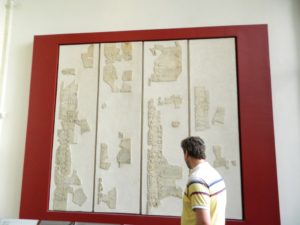
Near the end of our tour in this amazing museum, we found the remnants of a Roman calendar. We know that the Romans continuously kept changing their calendar in order to keep the holidays in check so that they didn’t have a spring festival in the middle of winter. In the Republic era, this job was given to the Pontifex Maximus. After Julius Caesar did a whole revamping of this calendar, we see his adopted son Octavian improve it even further when he becomes Pontifex Maximus as the emperor.
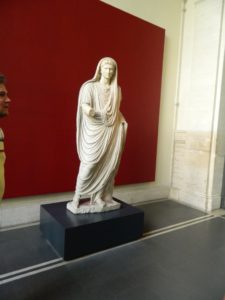
Shown across the room from the calendar is this wonderful statue of Octavian with his youthful face and displayed as a Pontifex Maximus. The way he has his stance and the fact that his robe covers his head proves his importance in this position. People later in the time of the empire like to display themselves with this stance and hood especially with the time of Christianity in order to connect their religion with the Pontifex Maximus, as the position was also used to make sure the religious festivals all happened at the right time. Octavian’s youthful face depicted throughout art helps us realize that youth was very important for all Romans…even if they want this face on a statue after they’re 80 years old.
At the baths of Diocletian museum, we focused on the architecture of the massive complex as well as the epitaphs within. The baths were a sort of ancient YMCA they had hot and cold baths, exercise facilities, vendors and they functioned not only as a place for people to bathe off the dirt of the day, but also to socialize. Daily bathing was expected in Rome and these bathes were built as a great display of wealth by the emperor Diocletian (3rd century AD).
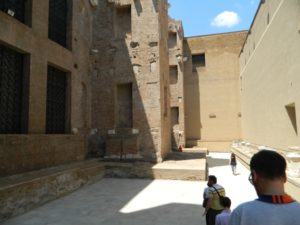
We also took the time to view ancient epitaphs and decipher the occupations of the owners. We were also able to see their jewelry and everyday items as well as ancient coins. The day ended with a wonderful visit to the Basilica Santa Maria and the ever-crowded Trevi Fountain.